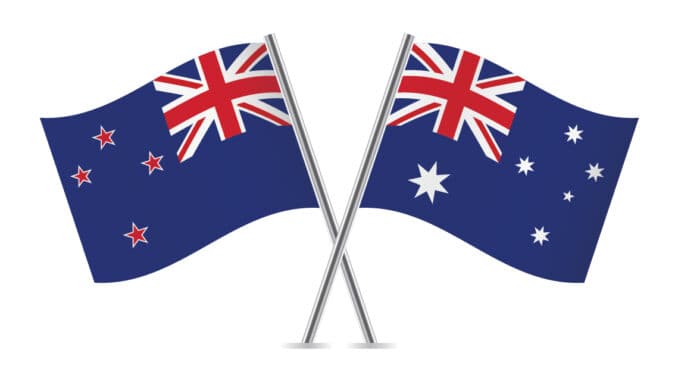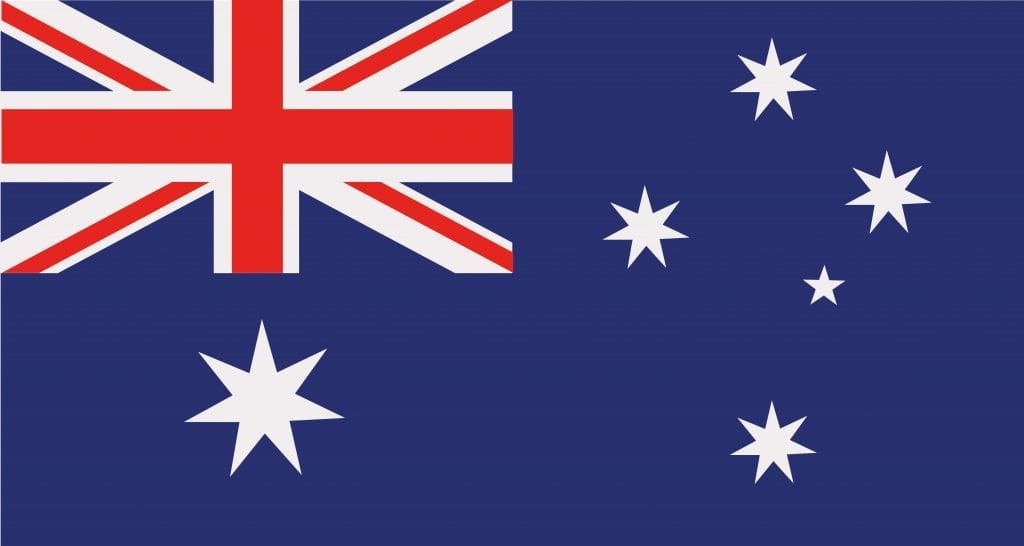
At first glance, you may not be able to tell the difference between Australia’s flag and New Zealand’s flag. You may ask yourself, “Why are the flags of Australia and New Zealand alike?”
There are many reasons why Australia and New Zealand have similar flags. For one, they are so close together geographically. Additionally, and importantly, they both were claimed as British colonies and therefore have similar historical backgrounds all centered around strong nautical themes.
In this article, we’ll take a deep dive into both flags, giving you the symbolic significance of each and what inspired the countries to make the flags that represent their nation.


Why are the two flags so similar?
The main inspiration behind both New Zealand’s and Australia’s flags are The Blue Ensign and the Southern Cross. The reason why these two flags are so similar is that they come from similar roots.
Captain James Cook landed on the shores of Australia in 1770. There, he planted the Blue Ensign. This flag, solid blue with a Union Jack in the top left corner, was flown by the British navy. As colonies of the British empire, Australia and New Zealand had versions of the Blue Ensign throughout their history.
It wasn’t until January 1, 1901, that both Australia and New Zealand broke away from Great Britain. Australia and six other colonies declared themselves a commonwealth together, while New Zealand chose to govern itself separately.
Both countries’ flags feature the Southern Cross constellation as well, a group of stars that are strikingly beautiful across the Southern Hemisphere. But the beauty of the Southern Cross isn’t its only significance; it also was a helpful constellation for sailors to navigate the waters at the time. This, together with the Blue Ensign, displays the distinct importance of both colonies’ naval fleet and nautical trade.
What are the differences between the flags?
The main visual difference is the number of stars on each flag. Australia has six stars, five forming the Southern Cross constellation, representing the position in the Southern Hemisphere. The seven-pointed larger star on the left of the flag represents the “Commonwealth Star,” each of the points is designed for the six Australian States and the Northern Territory.
New Zealand, on the other hand, also has the Southern Cross constellation in the exact same position, but they decided to leave the fifth, middle star off of their flag. They chose this because they also wanted the constellation to represent the directions of a compass.
Also, the stars are colored red, not white, on the New Zealand flag. Not only does the red correspond with the colors of the Union Jack, but the color is also significant for the Maori, the indigenous people of New Zealand. Red portrays high status among the Maori people.
Conclusion
These two countries have such a rich history that makes them so closely connected, which makes it understandable that their flags are so similar. Despite this, the subtle differences between the two flags set them apart; a representation of the uniqueness of each country.
